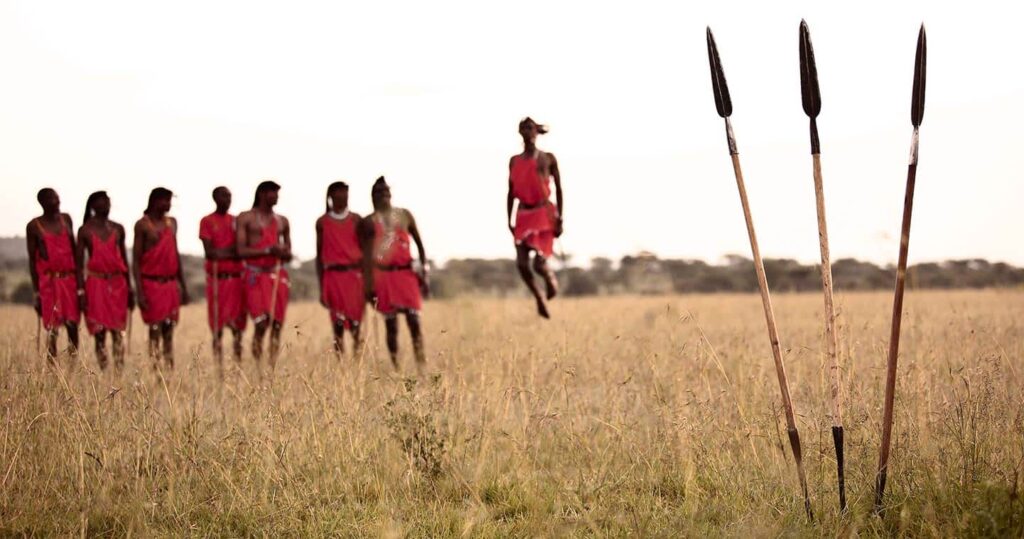Serengeti National Park
Serengeti National Park, located in the Mara and Simiyu regions of Tanzania, is not only the country’s most famous park but also one of the most renowned wildlife sanctuaries in the world. Spanning 14,750 square kilometers (5,700 square miles), this expansive park is a vital part of the larger Serengeti ecosystem, which includes the Ngorongoro Conservation Area to the southeast, the Masa Game Reserve to the southwest, the Ikorongo and Grumeti Game Reserves to the west, and the Loliondo Game Control Area to the northeast and east. To the north, it borders Kenya’s Maasai Mara National Reserve, creating a continuous habitat for a vast array of wildlife.

Historical Background
The Serengeti’s name is derived from the Maasai word “Siringet,” meaning “the place where the land runs on forever.” The Maasai people have grazed their livestock on these plains for around 200 years.
The first European explorer to visit the area was German Oscar Baumann in 1892, followed by Briton Stewart Edward White in 1913. White’s hunting expeditions in the 1920s led to the establishment of a partial game reserve in 1921, which became a full reserve in 1929. Serengeti National Park was officially established in 1951, thanks in part to the efforts of conservationists Bernhard and Michael Grzimek, whose work and documentary “Serengeti Shall Not Die” highlighted the importance of preserving this unique ecosystem.

Geography and Climate
The Serengeti is characterized by its diverse landscapes, including grassland plains, savannas, riverine forests, and woodlands. The park is typically divided into three regions:
- Serengeti Plains: The southern part of the park is an almost treeless grassland, home to the iconic wildebeest calving season from December to May. This area also supports large populations of zebras, gazelles, impalas, hartebeests, buffalo, and waterbucks during the wet season.
- Western Corridor: This region features swampy savannahs and the Grumeti River, which harbors Nile crocodiles, colobus monkeys, and martial eagles. The migration passes through this corridor from May to July.
- Northern Serengeti: Dominated by open woodlands and hills, this region extends from Seronera in the south to the Mara River at the Kenyan border. It is a prime area for spotting elephants, giraffes, and dik-diks, especially during the wildebeest and zebra migration from July to August and in November.

Wildlife and the Great Migration
The Serengeti ecosystem supports over 1.5 million wildebeest, 250,000 zebras, 500,000 Thomson’s gazelles, and significant populations of lions, leopards, cheetahs, elephants, giraffes, and other herbivores. The park is also home to more than 500 bird species, including ostriches, secretary birds, Kori bustards, and crowned cranes.
One of the most spectacular natural events in the world, the Great Serengeti Migration, involves over 1.5 million wildebeest and 250,000 zebras, always in search of new pastures and water. This migration is a continuous cycle driven by seasonal rains and the availability of grazing. Key stages of the migration include:
- December to April: The herds gather on the short grass plains of the southern Serengeti and Ngorongoro Conservation Area. January to March is the calving season, with 80% of young being born, attracting predators like lions and cheetahs.
- May to June: As the dry season begins, the herds move north through central Serengeti and the western Corridor, where they must cross the crocodile-infested Grumeti River.
- July to September:The migration reaches the northern Serengeti and the Mara River, presenting dramatic river crossings as the herds move into Kenya’s Maasai Mara.

Conservation Efforts and Tourism
Conservation has been a critical focus for the Serengeti, from its early days as a game reserve to its current status as a national park and a UNESCO World Heritage Site. Efforts to preserve wildlife have included measures to combat poaching, particularly of elephants and rhinos.
Despite these efforts, challenges remain, including human-wildlife conflict and the impact of tourism.
Tourism plays a vital role in the Serengeti’s economy, with the park being a major attraction on Tanzania’s Northern Safari Circuit. Visitors are drawn to the unparalleled wildlife viewing opportunities, the annual migration, and the park’s scenic beauty. Key tourist areas include the Seronera region, known for its high density of predators and the central hub for researchers and park staff.
Serengeti National Park stands as a testament to the importance of conservation and the enduring beauty of the natural world. Its vast landscapes, diverse wildlife, and the awe-inspiring spectacle of the Great Migration make it a crown jewel of Tanzania and a must-visit destination for nature enthusiasts from around the globe. Plan your adventure to this iconic destination and experience the magic of the Serengeti wildlife and the unforgettable Mara River Serengeti crossinas.
